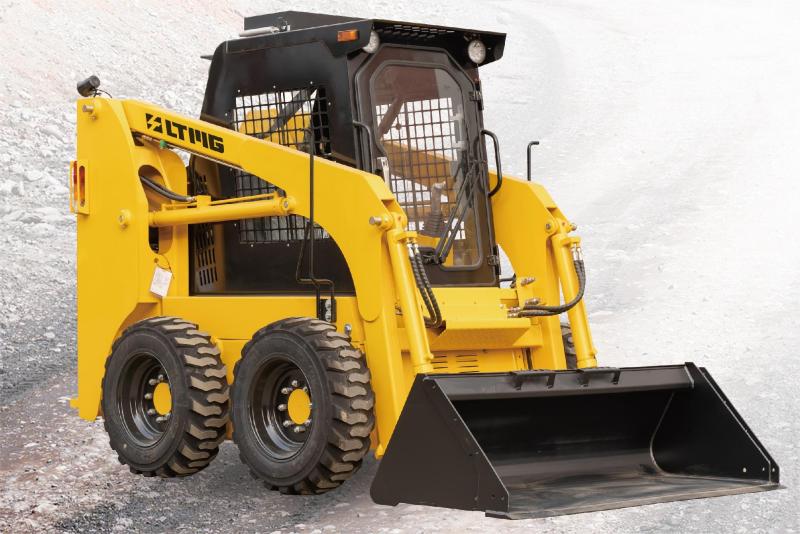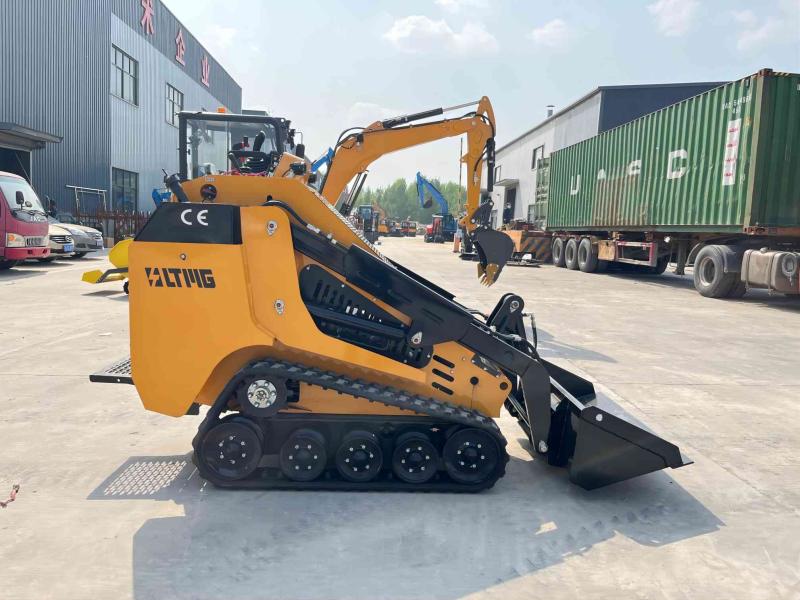Get the latest Product Information & Offer Information
A skid steer loader is a versatile and powerful machine widely used in construction, landscaping, agriculture, and various other applications. Understanding the main components of a skid steer loader is crucial for operators, technicians, and anyone interested in heavy machinery. This article will outline the core components of a skid steer loader, explaining their functions, significance, and various applications.

A skid steer loader is a compact, engine-driven machine equipped with lift arms that can attach to various labor-saving tools or attachments. These machines are designed to be versatile, maneuverable, and capable of performing a wide range of tasks. The core components of a skid steer loader include the bucket, cab, lift system, tires, drive motor, and axle. Each component plays a vital role in the overall functionality and performance of the machine.
The bucket is one of the primary attachments of a skid steer loader, used for loading, carrying, and dumping materials. It is typically made of durable materials such as steel or high-strength plastic to withstand heavy loads and harsh working conditions. The design of the skid steer's bucket can be customized for different tasks, such as digging, grading, or multipurpose use, enhancing its versatility and applicability. Whether moving soil, gravel, construction materials, or clearing debris, the design and quality of the bucket directly affect work efficiency and effectiveness.
The cab is the operator's workspace in a skid steer loader, designed to provide a comfortable, safe, and efficient working environment. It usually features a comfortable seat, ergonomically designed control panels, and advanced climate control systems to ensure the operator's comfort and productivity during extended operations. The cab also includes Roll Over Protection Structure (ROPS) and Falling Object Protective Structure (FOPS) for added safety. Visibility is a crucial aspect of cab design, with large windows and strategically placed mirrors offering a clear view of the surroundings, which is essential for operating in tight or busy work environments.
The lift system is one of the key components of a skid steer loader, controlling and operating the lift arms and their attachments. The lift arms are driven by a hydraulic system, allowing the loader to raise, lower, and tilt its attachments, thus completing various material handling and loading tasks. The design and performance of this system directly impact the machine's versatility and operational efficiency. Lift arms typically feature a high-strength design to withstand heavy loads and frequent operations while ensuring smooth and precise control. The quality and maintenance of the hydraulic system also significantly affect the responsiveness and reliability of the lift system.
The tires of a skid steer loader are crucial for its mobility and maneuverability. They are usually selected for their durability, puncture resistance, and ability to adapt to various terrains. The choice of tires can be adjusted based on different working environments, such as hard surfaces or uneven terrain, to provide optimal traction and stability. The tire design not only needs to consider durability but also must balance handling and comfort. Good tire design enhances the machine's maneuverability and reduces vibrations affecting both the machine and the operator, thus improving work efficiency and comfort.
The drive motor is the power source of the skid steer loader, typically driven by a diesel engine or hydraulic motor. The drive motor provides sufficient power and torque to propel the loader under different working conditions. Its design and performance directly affect the machine's operational efficiency, fuel consumption, and reliability. An efficient drive motor can provide strong power while maintaining low fuel consumption and emissions, reducing operating costs and environmental impact. Regular maintenance and upkeep are crucial for ensuring the long-term reliability and performance of the drive motor.
The axle is a key component that connects the wheels and the drive system of the skid steer loader, supporting and transmitting power to the wheels to propel the machine. A high-strength axle design can withstand the heavy loads and varying motion stresses encountered during work while ensuring wheel stability and reliability. The design and quality of the axle directly impact the durability and operational stability of the skid steer loader. Robust axles can maintain performance in harsh working environments, reducing machine downtime and maintenance costs.
Skid steer loaders are widely used across various industries and work scenarios due to their versatility and efficiency. In the construction sector, they are used for moving and stacking building materials, site cleanup, and assisting in construction tasks. For example, in urban construction, skid steer loaders can easily enter narrow sites, significantly improving work efficiency. In agriculture, skid steer loaders can be used for cleaning livestock manure, stacking feed, and transporting agricultural products. Their versatility makes them indispensable tools on farms, not only increasing productivity but also reducing labor intensity.
In landscaping and municipal maintenance, skid steer loaders can clean streets, trim trees, and remove debris. For instance, in winter, skid steer loaders can be equipped with snow plows to clear snow, ensuring road accessibility. Additionally, skid steer loaders play important roles in mining, ports, and logistics centers, improving material handling and loading efficiency, reducing labor costs and time waste. In mining, skid steer loaders can be used for transporting ores and cleaning mining areas. In ports and logistics centers, skid steer loaders are used for loading and unloading containers and goods, speeding up cargo turnover.
The versatility of skid steer loaders stems from their design and additional features. Firstly, they are equipped with powerful hydraulic systems that can drive various attachments, such as buckets, forklifts, augers, and shears. This allows skid steer loaders to quickly switch between different tasks according to the needs, improving work efficiency. Secondly, the compact design of skid steer loaders allows them to maneuver flexibly in narrow spaces, making them ideal for urban construction and small job sites. Furthermore, skid steer loaders usually come with advanced cabs and control systems, providing a comfortable and safe operating environment. Modern skid steer loaders are also equipped with electronic control systems, allowing precise control of various functions, thus enhancing operational precision and efficiency.

In summary, skid steer loaders consist of multiple key components, each playing a vital role in the overall functionality and performance of the machine. The bucket is used for loading and transporting materials, the cab provides safety and comfort for the operator, the lift system controls the operation of attachments, the tires provide mobility, the drive motor supplies power, and the axle supports and transmits power to the wheels. Understanding the functions and importance of these core components helps operators and maintenance personnel optimize the use, maintenance, and performance adjustments of the machine, maximizing the efficiency and lifecycle cost-effectiveness of the skid steer loader. Skid steer loaders are indispensable tools in various industries, and their versatility makes them a valuable asset on any job site. With continuous technological advancements, the performance and capabilities of skid steer loaders will further improve, continuing to play an important role in various fields.